Homebrewer Adventure: Exploring Craft Beer and Drinking Chicha in Peru
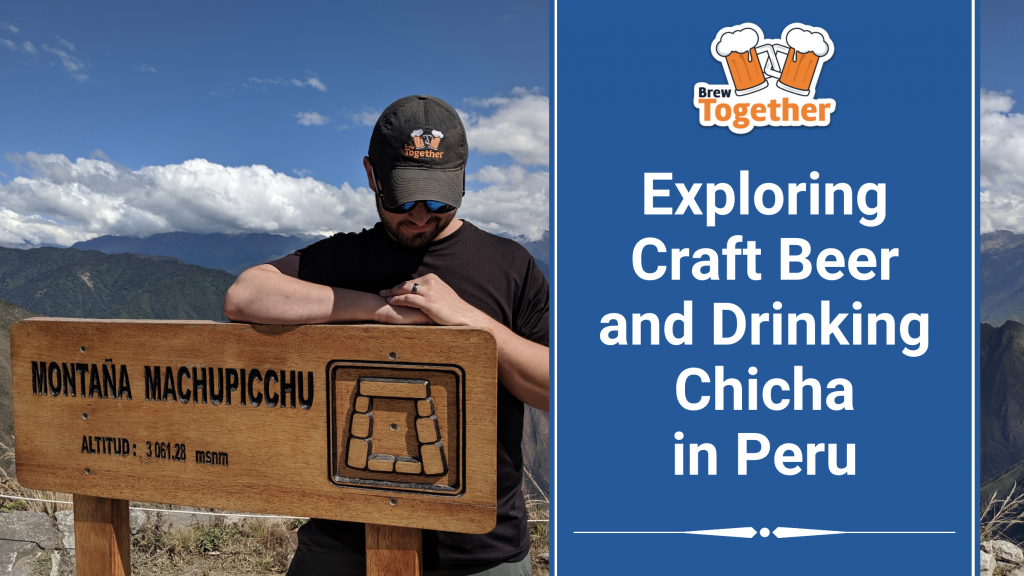



The only thing I love as much as brewing is traveling, and I’m more of an “adventure” guy than a “vacation” guy. While other people are enjoying fancy hotels and inclusive resorts, I prefer to wander through unfamiliar streets, use local transit, eat the street food, and find the hidden gems.
It has been said that the best way to experience other cultures is through eating their food, but I think that it’s more fun to learn about other cultures through their alcohol. Alcohol has been consumed for social and celebratory purposes throughout history, and I think it is the perfect way to connect with people from another part of the world. So, when I visited Peru and found out about a traditional Peruvian beverage called chicha (dating all the way back to the Incan empire) that is EXCLUSIVELY homebrewed, I knew I had to try it!
Here’s the full video of the BrewTogether Crew’s trip through Peru, which included some exploration of Peru’s growing craft beer scene, a climb up Machu Picchu Mountain, and a trek through the Peruvian Amazon Rainforest. Want to skip ahead to the part where we explain how to make Chicha? Head to 1:48 of the video!
Chicha De Jora
What is Chicha de Jora?
Chicha de Jora is essentially a corn-based beer. Chicha is made out of dried potatoes called moraya and a Peruvian corn called choclo, which has huge, juicy kernels. Chicha is filtered through straw, but it still has a fairly thick consistency with some solid corn particles mixed throughout. It has a pale yellow and milky color, with a dry, slightly sour flavor. It’s closer to hard apple cider than beer in flavor. It’s different, but it is overall pleasant and I enjoyed it more than I thought I would.
The History of Chicha
Chicha is a traditional Peruvian alcoholic beverage that has been consumed since the time of the Incan empire. It was first created accidentally during the reign of the Inca Tupac Yupanqui in the late 1400s when rainwater leaked into stored corn causing it to germinate and ferment. According to the legend, the fermented corn was thrown away and later consumed by a starving person seeking a meal. After eating the “spoiled” corn and becoming drunk, the starving local presumably shared their discovery with others. Before long, Chicha de Jora was the preferred beverage of Incan nobilty and became central in many Incan ceremonies.
Finding Chicha in Modern Ollantaytambo, Peru
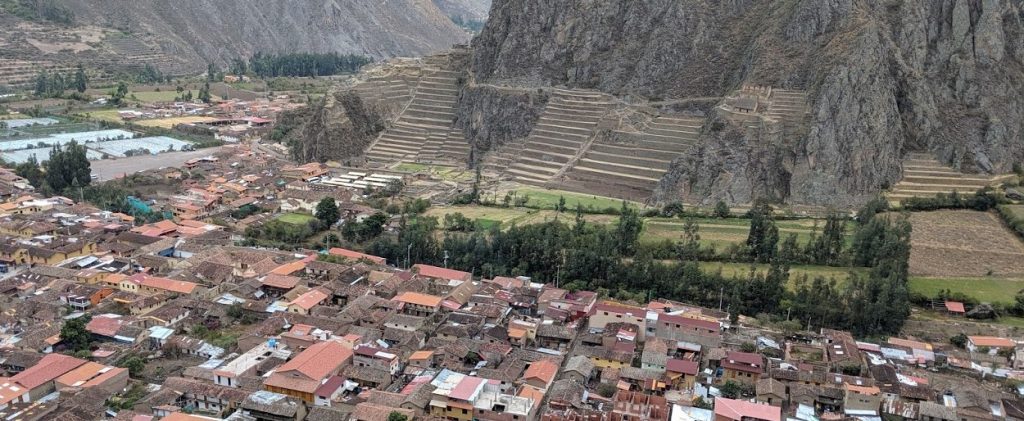

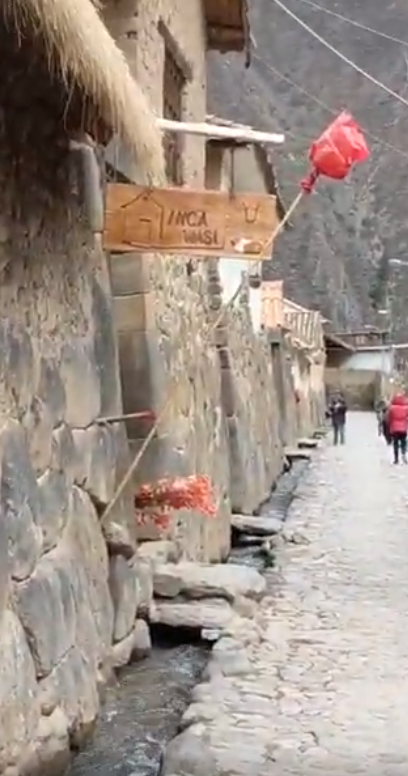

In modern times, Chicha is produced essentially the same way it was produced during the Inca empire. It is brewed by homebrewers throughout Peru as an unlicensed form of supplemental income. In fact, we could not find a single commercial Chicha de Jora available. The Chicha is prepared and served in the home of the brewer, and these “chicharias” are identified by a red flag or flower on a bamboo pole extended outside of the home. The Chicha is served directly out of the large clay pot used for fermentation, and in my experience price is not discussed before serving. Generally, it seems that a few Peruvian soles is appropriate for a glass of Chicha. I think I offered 10 soles (about $3 USD) for mine, because the brewer was kind enough to explain the process of creating Chicha and spent more than a few minutes chatting with us. She was a lovely host and I really enjoyed the experience.
Is Chicha Safe to Drink?
A quick review of travel blogs gave me some mixed insight into whether Chicha is safe for non-locals to drink (you need to be careful in general in Peru, because the water is not safe to drink and it’s easy to get food poisoning if you aren’t careful). After a couple of days, I decided to roll the dice and give it a shot, and I’m so glad I did! In the end, you are probably taking a small risk by drinking something produced with no regulations and fermented in an open clay pot on the floor of a home with guinea pigs running around. To me it was worth the risk to share the experience of drinking a homebrew with someone who lives a world away.
After trying it myself, I recommend trying Chicha if you find yourself wandering the streets of Ollantaytambo and come across a house with a red flag out front. I can’t promise you won’t regret it, but I certainly didn’t!
How Chicha is Made
Chicha is made following a process very similar to making beer. The choclo corn is germinated, which prepares the malt sugars for fermentation, just like barley is malted to make beer. After the choclo is germinated it is ground using a large stone with the moraya and boiled in water to create a wort. After the boil is completed, the wort is filtered through a bed of straw into a large clay pot for fermentation where it stays for a minimum of three days.
I was relieved to hear this process explained to me, as I have heard that the true traditional way to produce chicha was to chew the germinated corn and spit it into the fermentation vessel. To be honest, I still would have tried it (I had come too far to chicken out now!), but I was not upset to find it had been ground by a stone and then boiled. After three days of fermentation, it can begin to be consumed. At the three day mark, it is still slightly sweet, and it continues over the next few days to ferment completely dry.
Craft Beer in Peru


In addition to Chicha, there is a craft beer scene that is beginning to take off in Peru. In Cusco, there are some awesome tap rooms, like Cholos, where great locally brewed beer is served in a sports bar atmosphere. We had the opportunity to catch one of the World Cup games Peru played in while we were there and it was a blast to see the city respond to each goal. We also hit the Arequipa Beer Club, where we had a few great beers with an awesome rooftop seating area.
Touring the Cerveceria del Valle Sagrado


The best beer experience in Peru was by far visiting the Cerveceria del Valle Sagrado, or Sacred Valley Brewing Company. If you’re willing to travel like the locals do, you can take a crowded minibus (basically a passenger van) from Ollantaytambo to the brewery, which is located several miles out of town, for about 2 soles (under $1 USD). The brewery itself is relatively small, but had an impressive lineup of beers on tap. From the second we walked in, the people working at the brewery were incredibly warm and inviting.
We sat and ordered the full flight, and our server enthusiastically explained each beer, including the hops and grains in each one. As I finished each taster, he would stop by and see how I liked the beer and chat for a minute. The service was so good at the brewery that when I finished my flight, we were comfortable with asking if there was any chance they could do a short informal tour of the brewing operation for us.
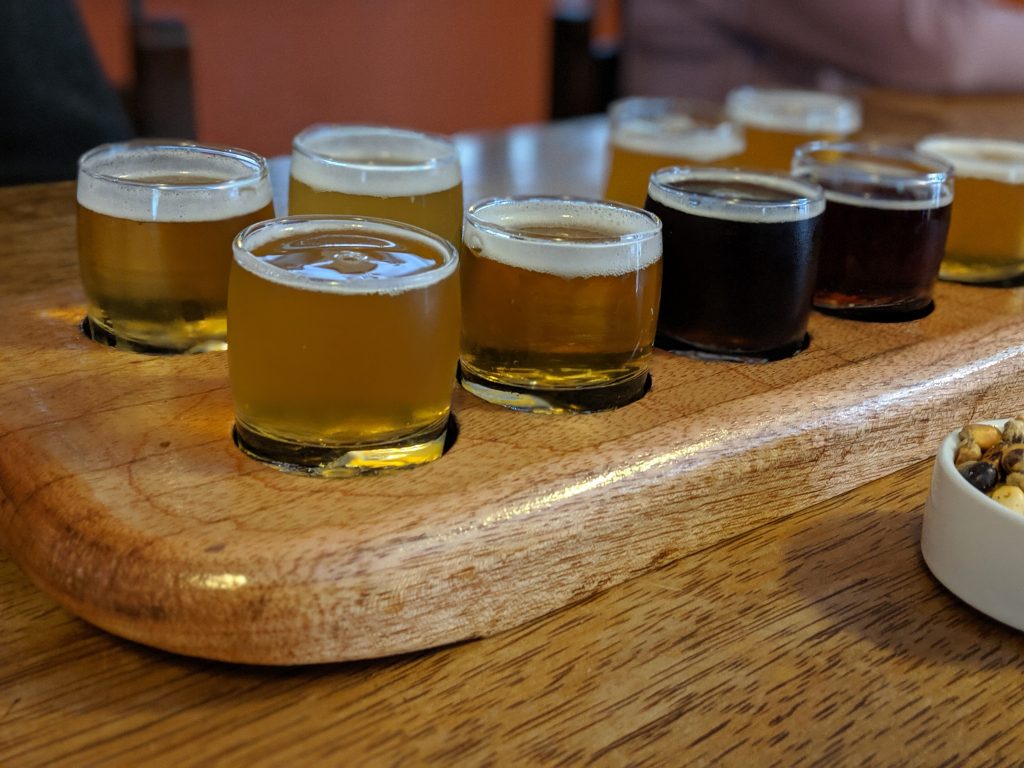

The brewery was getting busy, so we would have completely understood if it wasn’t possible, but our server said he’d see if the brewer was still there. A few minutes later, the head brewer, Carlos, came to greet us, and then took us on the most interesting and personal brewery tour I have ever been on. He walked us through the brew house, the outdoor areas where they are growing hops, introduced us to the brewing team, and then showed us the basement, where the grain, hops, and other unique ingredients were stored.
One of the things that sets Carlos apart from other brewers is his willingness to try new things and brew with unique ingredients. He explained that he is experimenting with malting his own grain, and uses local ingredients from the Peruvian Rainforest that no one else in the world is using in beer. In fact, Carlos is the first brewer in Peru to malt his own grain, grow his own hops, and barrel age beer. He’s experimenting with local fruits like Ubos, and is making kettle sours and brett saisons in a region where you’re lucky to find an IPA. Carlos is focusing heavily on collaborating with local distilleries and restaurants with the goal of elevating the craft beer industry in Peru. From the number of awards he’s won, he is clearly doing a great job!
After a few minutes of talking with him we made an extremely surprising discovery – we knew some of the same people! It turned out that, like me, Carlos had lived in the Washington, DC area before moving to the Sacred Valley to become the head brewer. In fact, he had been a brewer at Vanish Brewing Company, a brewery I drank a beer in literally a week before meeting Carlos in Peru. We chatted about the Washington DC/Northern Virginia beer scene for a while and realized we even had a few acquaintances in common. After realizing that, I asked Carlos if he had any advice for homebrewers looking to break into the beer industry professionally.
Breaking into the Brewing Industry
Carlos shared his awesome story about how he became a head brewer and he had some great advice for anyone who wants to get into the beer and brewing industry. First, he said he began learning about the industry by just going to a lot of breweries and being really enthusiastic about the beer and speaking with the owners and brewers. Brewers are usually happy to speak with you about their beer, and it can’t hurt to ask questions.
Once he decided to make the career change to brewing full time, he saved his money until he could afford to quit his job and work for free for a year. Saving gave him the opportunity to work with a lot of other brewers and learn the trade, and helped him make several important connections in the beer industry. Those connections helped him get jobs as a brewer in Maryland and Virginia.
Eventually, one of those connections offered him a unique opportunity. Their head brewer in a small brewery in rural Peru was leaving, and he needed someone to go keep the operation going for six months. That was a few years ago now, and it doesn’t look like Carlos is going anywhere anytime soon.


Carlos spent over an hour talking to us and inspiring me to continue to work to grow BrewTogether. At the end of our conversation, he asked us what our favorite of their beers was, and then bought us a round of drinks. It was a surreal and amazing experience meeting him, and I can’t wait for my next trip to the Sacred Valley to grab a beer with Carlos again.
Our trip through Peru was quite the adventure, and I highly recommend it. As a brewer, it was amazing to connect with Peru’s past through Chicha and their future through their growing craft beer movement.
Thanks for Stopping By!
Have you tried Chicha in Peru? Have you made it yourself? Leave a comment below or check out the new Brewing Around the World forum, where the discussion is all about different homebrewing traditions around the globe.
Thank you for reading and watching! It would mean the world to us if you would share this article and video with your friends using the share buttons below!
If you’re not a member of BrewTogether, we’d love for you to join! BrewTogether is completely free, and signing up is easy! Click here to join!
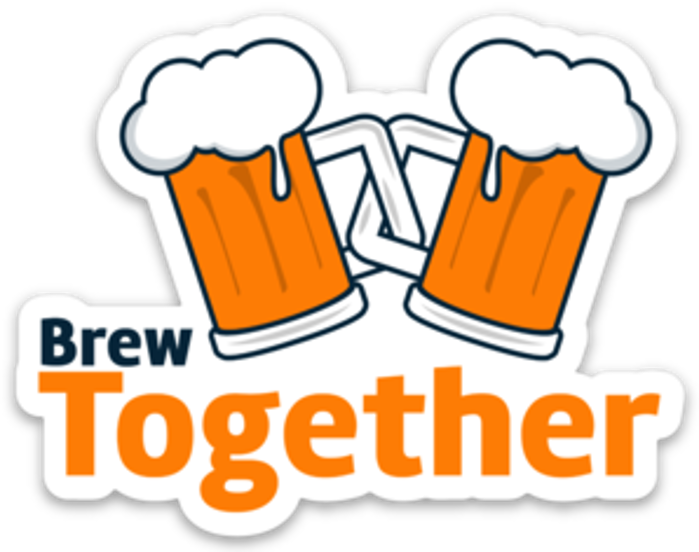





This is freaking awesome, man! What a cool trip! I definitely want to try chicha! Have you made it yourself?
Thanks! It was an AWESOME experience! I actually haven’t made it myself yet, but I plan to! It was really cool to get to speak with one of the Chicha brewers there and learn about their process. My goal is to go back someday and brew it with them!
Wow, that is awesome! I had no idea that Peru has gotten into the craft brewing world. One more reason for me to go there now!
I definitely recommend the trip! It was a very cool place with a ton of different experiences to be had, and the beer scene is really starting to take off. Worth it for sure!